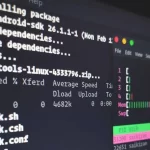Google Drive Linux Clients – Google launched its cloud storage service Google Drive, and it has grown to become one of the most popular cloud storage services in the market. While official clients have been available for Windows, Android, and OS X, iOS and Chrome OS also made it to the list.
Table Of Content
The Mountain View, California-based company in 2012 that “the team is working on a sync client for Linux.” which was followed by “the team is working on a sync client for Linux” in 2013, but it never shared an exact time-frame. Reasonably, Linux users are unsatisfied, with entire Reddit threads dedicated to discussing Google’s apathy towards them.
Note:
All clients were tested on Ubuntu 16.04, and all the commands mentioned in the article are Ubuntu-specific.
1.Grive2
Grive2 is a fork of the now-deserted Grive client for Google Drive that stopped running after the Document List API it used was shut down. Before we begin with the installation and set-up part, it’s well worth declaring that Grive2 is still in beta phase, that means there are some missing features and the tool might also once in a while act buggy as well.
Download and Install
The first step is to download the latest Grive2 package from the tool’s official GitHub page. Once done, we will need to then install the tool’s dependencies before building the tool itself:
sudo apt-get install git cmake build-essential libgcrypt11-dev libyajl-dev libboost-all-dev libcurl4-openssl-dev libexpat1-dev libcppunit-dev binutils-dev
Now, extract the downloaded Grive2 package (.zip file), and enter into the extracted directory. Here, run the following commands to build and install the tool:
mkdir build
cd build
cmake ..
make -j4
sudo make install
Setup
On the Next up, create a directory where you want your Google Drive stuff to be synchronized. For example, we created a directory dubbed googleDrive in my home directory. Once done, enter into the newly created directory, and execute Grive2 through command line by simply typing the following command:
grive -a
Note that ‘-a’ is necessary when running Grive2 for the first time as it helps the client connect to your Google Drive account. As we can see in the output below, you are required to head to a URL, where you’ll be asked whether or not to allow this application to access your Google Drive account. Once the permission is given, a code is presented which you’ll have to enter on the command line:

That’s works fine. Assuming that all the steps mentioned till now are executed successfully, Grive2 will start downloading your Google Drive files locally. Remember that you’ll have to run the ‘grive’ command (sans ‘-a’) each time you want the synchronization to happen for help, run the command with ‘–help’ flag.
[ad type=”banner”]2. overGrive
overGrive is a GUI-based client for Google Drive. The project started as a graphical front-end to the Grive command line client, but soon turned into a separate, client for Google’s cloud storage service. Unfortunately, overGrive is neither open source, nor a freeware it’s a exclusive software that sets back $4.99 per Google Drive account.
Download and Install
To download the overGrive package, which you can do from its official web site. For Ubuntu, you’ll get a .deb file, which you can install using the ‘dpkg’ command.
sudo dpkg -i overgrive_3.1.9_all.deb
In case, the command above failed initially with the following output:
Reading package lists… Done
Building dependency tree
Reading state information… Done
You might want to run ‘apt-get -f install’ to correct these:
The following packages have unmet dependencies:
overgrive : Depends: python-pip but it is not going to be installed
Depends: python-gi but it is not going to be installed
Depends: python-setuptools but it is not going to be installed
Depends: libappindicator1 but it is not going to be installed
E: Unmet dependencies. Try ‘apt-get -f install’ with no packages (or specify a solution).
So, as you can see, there were some dependencies, something which fixed by running the following command:
apt-get -f install
And executed the ‘dpkg’ command again this time it was successful and the client was installed. To launch overGrive, head to the Dash:

Setup
When the client is launched for the first time, you’ll be required to run a set-up that’ll effectively connect the client to your Google Drive account.

Click the ‘Ok’ button in the window above, and you’ll see the following window:

Here click the ‘Connect account’ button. This will open a web page where you’ll be asked to authorize oneGrive to access your Google Drive account.

As you click the ‘Allow’ button, you’ll be presented with a code, which you’ll have to enter in the client’s window :

Then, hit the ‘Validate’ button.
In this case, after press the ‘Validate’ button, the oneGrive window disappeared as if the software crashed. we waited for a minute or then again opened overGrive through Dash.

In case you encounter the same situation, you should press the ‘Continue’ button as the ‘Activate’ button takes to the client’s official website, likely for a license purchase.
Pressing the ‘Continue’ button provides up a window that shows the client is now connected to your Google Drive account.

Press the ‘Start Sync’ button, and the client window will disappear with the oneGrive system tray icon appearing at the top right of your screen. A notification will also be displayed saying that the ‘Auto Sync’ feature is ON.

Click the client’s system tray icon and you’ll see that the sync process has already begun.

You can also toggle the ‘Auto Sync’ feature, as well open the local directory and visit the Google Drive Web interface.
3.drive
‘drive’ is a command line Google Drive client that let’s push and pull stuff to/from the search cloud storage service. Even though it may look one, ‘drive’ is actually not yet-another third-party Linux client for Google Drive it’s written by a Google employee Burcu Dogan who works for Google Drive’s platform team, and Google even holds the copyright for the tool. But Dogan has been busy, so the project is being maintained by Emmanuel T Odeke.
Download and install
To install ‘drive,’ ensure that you have version 1.5.X or higher of Google’s GO language compiler installed on your system.
Now, you can proceed to install the ‘drive’ client – here’s the command for it:
go get -u github.com/odeke-em/drive/cmd/drive
Once the above command is done, create a directory where you want ‘drive’ to sync your Google Drive stuff. For example, created a directory named ‘gdrive’ in my home directory:
mkdir ~/gdrive
And then run the following command:
$ drive init ~/gdrive
you’ll be first required to connect the client to your Google Drive account, so when you run the above command, it will ask you for authorization:

Go to the link displayed on your terminal screen, authorize the client to connect to your account and finally copy the code you get there and paste it in terminal.
Now, you can do a ‘drive pull’ to download data from your Google Drive account to your local machine and ‘drive push’ to do vice-versa. Here’s an example of pull:
$ drive pull Advanced-GDB-tips
Resolving…
+ /Advanced-GDB-tips
Addition count 1 src: 13.39KB
Proceed with the changes? [Y/n]: Y
13715 / 13715 [================================================================================================================] 100.00% 2s
“The pull command downloads data that does not exist locally but does remotely on Google drive, and may delete local data that is not present on Google Drive. Run it without any arguments to pull all of the files from the current path.”
And here’s an example of push:
$ drive push test.txt
Resolving…
+ /test.txt
Addition count 1
Proceed with the changes? [Y/n]:y
“The push command uploads data to Google Drive to mirror data stored locally. Like pull, you can run it without any arguments to push all of the files from the current path, or you can pass in one or more paths to push specific files or directories.”
4. Insync
Insync is a GUI-based, feature-rich Google Drive client that works on several platforms including Linux. But, like OverGrive, Insync is also an exclusive software it costs $25. The amount charged can be one-time or per-year depending upon whether you are an end-user, professional, or an organization. Insync provides a 15-day free trail, so we can test it out before deciding whether or not to spend your money on it.
Download and Install
To download Insyc on your system, download the package/installer for your system from the tool’s official website. For Ubuntu, a .deb file will be downloaded, which you can easily install using the ‘dpkg’ command. Here’s the command :
sudo dpkg -i insync_1.3.6.36076-trusty_i386.deb
Once done, you’ll see a notification similar to the following:

Above Press the ‘Start Insyc’ button in the window, and you’ll see the ‘i’ icon (see image below) in the system tray:

Setup
Click Insync’s icon in system tray and then click the ‘Open app window’ option to launch the UI

here is the first step is to connect the client with your Google Drive account. So, press the ‘ADD GOOGLE ACCOUNT’ button in the UI. It will open a web page asking to allow the client to access your account.

After authorize, the client installed on your machine will ask you to provide a directory in which you want it to sync your Google Drive stuff.

Once you’re done with this set-up, press the ‘Finish’ button.
Now, when you’ll open the client UI, you’ll see the files and folders stored in your connected Google Drive account as well as options detailing how you’ve configured Insyc to handle them.

The grey-colored column on the left contains various configuration options that are available to the user. For example, Selective Sync lets choose which files you want the client to sync. Ignore List lets specify the files/folders that you don’t want to upload/download. Convert specify whether or not you want to convert stuff stored in your Google Drive into some other format like Microsoft Office or OpenDocument and Stats gives a chart showing how much of your Google Drive space has been expended.







